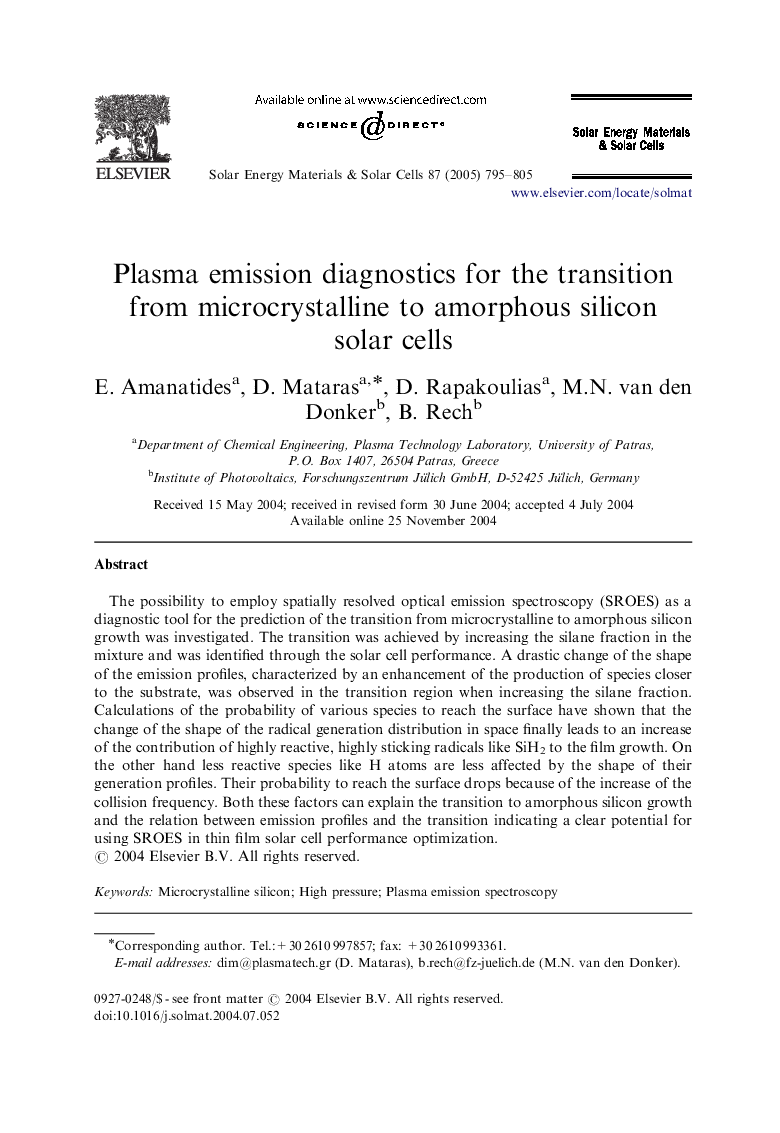| Article ID | Journal | Published Year | Pages | File Type |
|---|---|---|---|---|
| 9618723 | Solar Energy Materials and Solar Cells | 2005 | 11 Pages |
Abstract
The possibility to employ spatially resolved optical emission spectroscopy (SROES) as a diagnostic tool for the prediction of the transition from microcrystalline to amorphous silicon growth was investigated. The transition was achieved by increasing the silane fraction in the mixture and was identified through the solar cell performance. A drastic change of the shape of the emission profiles, characterized by an enhancement of the production of species closer to the substrate, was observed in the transition region when increasing the silane fraction. Calculations of the probability of various species to reach the surface have shown that the change of the shape of the radical generation distribution in space finally leads to an increase of the contribution of highly reactive, highly sticking radicals like SiH2 to the film growth. On the other hand less reactive species like H atoms are less affected by the shape of their generation profiles. Their probability to reach the surface drops because of the increase of the collision frequency. Both these factors can explain the transition to amorphous silicon growth and the relation between emission profiles and the transition indicating a clear potential for using SROES in thin film solar cell performance optimization.
Related Topics
Physical Sciences and Engineering
Chemical Engineering
Catalysis
Authors
E. Amanatides, D. Mataras, D. Rapakoulias, M.N. van den Donker, B. Rech,
